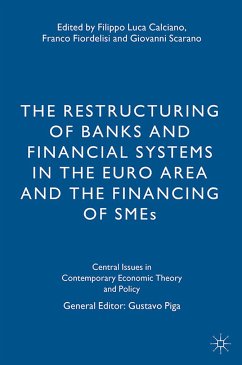
Life After Debt (eBook, PDF)
The Origins and Resolutions of Debt Crisis
Redaktion: Stiglitz, J.; Heymann, D.
Versandkostenfrei!
Sofort per Download lieferbar
72,95 €
inkl. MwSt.
Weitere Ausgaben:

PAYBACK Punkte
36 °P sammeln!
This volume provides a pluralistic discussion from world-renowned scholars on the international aspects of the debt crisis and prospects for resolution. It provides a comprehensive evaluation of how the debt crisis has impacted Western Europe, the emerging markets and Latin America, and puts forward different suggestions for recovery.
Dieser Download kann aus rechtlichen Gründen nur mit Rechnungsadresse in A, B, BG, CY, CZ, D, DK, EW, E, FIN, F, GR, HR, H, IRL, I, LT, L, LR, M, NL, PL, P, R, S, SLO, SK ausgeliefert werden.












